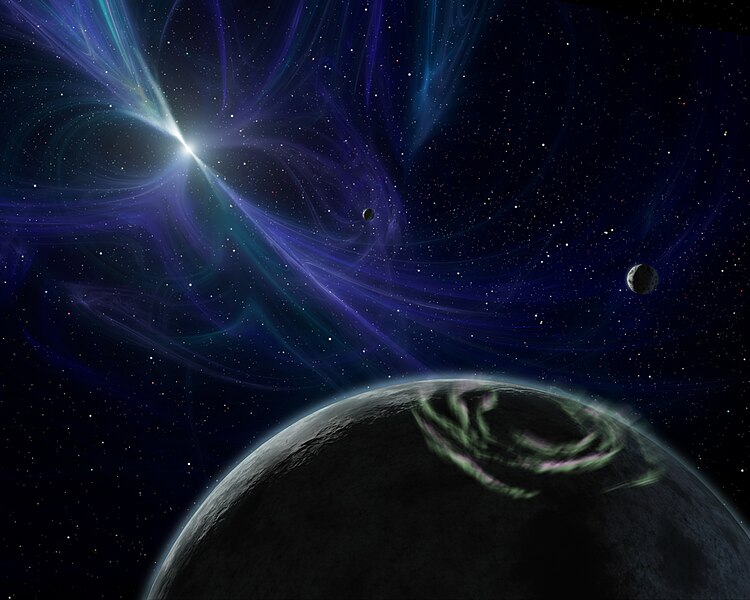Bestand:Artist's concept of PSR B1257+12 system.jpg

Grootte van deze voorvertoning: 750 × 600 pixels. Andere resoluties: 300 × 240 pixels | 600 × 480 pixels | 960 × 768 pixels | 1.280 × 1.024 pixels | 2.560 × 2.048 pixels | 3.000 × 2.400 pixels.
Oorspronkelijk bestand (3.000 × 2.400 pixels, bestandsgrootte: 2,66 MB, MIME-type: image/jpeg)
Bestandsgeschiedenis
Klik op een datum/tijd om het bestand te zien zoals het destijds was.
| Datum/tijd | Miniatuur | Afmetingen | Gebruiker | Opmerking | |
|---|---|---|---|---|---|
| huidige versie | 15 apr 2006 00:35 |  | 3.000 × 2.400 (2,66 MB) | Superborsuk | * '''Source''': [http://www.spitzer.caltech.edu/Media/releases/ssc2006-10/ssc2006-10c.shtml] * '''Image Credit''': NASA/JPL-Caltech * '''Image produced by''': R. Hurt (SSC) |
Bestandsgebruik
Dit bestand wordt op de volgende 5 pagina's gebruikt:
Globaal bestandsgebruik
De volgende andere wiki's gebruiken dit bestand:
- Gebruikt op af.wikipedia.org
- Gebruikt op ar.wikipedia.org
- Gebruikt op ast.wikipedia.org
- Gebruikt op be-tarask.wikipedia.org
- Gebruikt op be.wikipedia.org
- Gebruikt op bg.wikipedia.org
- Gebruikt op bn.wikipedia.org
- Gebruikt op ca.wikipedia.org
- Gebruikt op de.wikipedia.org
- Gebruikt op en.wikipedia.org
- Neutron star
- Wikipedia:Selected anniversaries/January 9
- PSR B1257+12
- Pulsar
- Timeline of Polish science and technology
- Methods of detecting exoplanets
- Wikipedia:WikiProject Astronomy/Image Review
- User:Spark Moon
- User:WilyD/potential
- PSR B1257+12 A
- PSR B1257+12 B
- PSR B1257+12 C
- Template:PSR B1257+12
- User:CatJar
- User:Tr00rle
- Wikipedia:Userboxes/Science/Astronomy
- List of Polish inventors and discoverers
- User:Nrco0e/Userboxes
- User:Kepler-1229b/sandbox/PSR 1257+12 D
- User:Dronebogus/Basement
- Habitability of neutron star systems
- User:Nrco0e/Userboxes/Pulsarplanets
- Pulsar planet
- Wikipedia:Main Page history/2024 January 9
- Gebruikt op en.wikinews.org
- Gebruikt op eo.wikipedia.org
- Gebruikt op es.wikipedia.org
Globaal gebruik van dit bestand bekijken.


